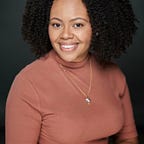Esther McCready
Nursing Trailblazer and first African American admitted to the University of Maryland School of Nursing
Esther McCready was born on January 10, 1931 to John and Elizabeth McCready in Baltimore, Maryland. As a child, McCready knew she wanted to be a nurse. She worked as a nurses’ aid at Sinai Hospital in East Baltimore while in high school in the maternity ward. Upon graduation she worked at Johns Hopkins Hospital in the medical record department and at the time applied to the University of Maryland School of Nursing UMSON in 1949 in hopes of becoming a registered nurse.
Under the premise of Plessy v. Ferguson, where the U.S. Supreme Court upheld segregation and discrimination within public space institutions provided “separate but equal” facilities for Black and white students. UMSON did not admit Black students, and instead provided scholarships to three Black applicants each year to attend a Black nursing school. Consequently, McCready was denied admission because she was Black despite meeting “all the education and character requirements for admission.” Instead, she was offered a full scholarship to attend a Black nursing school, Meharry Medical College in Nashville, Tennessee.
With the support of National Association for the Advancement of Colored People (NAACP) attorney Donald Murray and Dean of the Howard University School of Law, Charles Hamilton Houston, McCready took the decision to the Baltimore City Courts. While McCready and her team lost this first battle, they persisted and appealed the decision. NAACP Attorney Thurgood Marshall joined the team and “McCready sued the state and Governor William Preston Lane Jr. of Maryland for admission to the University of Maryland on a claim of discrimination.” McCready won her case in the Maryland Court of Appeals that in April 1950, and was granted admission to the UMSON beggining in the fall semester. McCready’s admittance was one of the earliest catalyst to desegregation of public academic institutions that would soon materialize in the 1954 Brown v. Board of Education of Topeka case.
While McCready was admitted to UMSON representing a step forward, she endured a series of trials that tested her faith and commitment to nursing. She was socially isolated from her peers, offered limited resources and support, and ignored by white faculty and staff. However, McCready persevered with support of Black staff members, family, a legal team, and her faith. Recalling her first day of orientation, McCready tells a story in which one of the instructors while waiting at the elevator tells her “If you don’t pray to God, you won’t get out of here, because nobody here is for you.” (Pollitt, 2016) McCready, standing on unwavering faith responded, “If God intends for me to get out of here, nobody here can stop me.”
After graduation, McCready continued to face racism and discrimination within nursing. She worked in various roles as a registered nurse in the Baltimore City Health department, Druid Health Center, and as Head Nurse in various hospitals throughout New York. McCready’s expertise extended beyond nursing. She received her master’s degree in Music from Manhattan School of Music and was an opera singer traveling throughout the U.S. and Europe. She was also an educator in the New York Public School System.
Throughout her lifetime, McCready was a devout activist participating in electoral politics, election campaigns, and various Civil Rights initiatives and events. She has been widely recognized by her peers and institutions for her courage and commitment to improving society and was inducted into the Maryland Women’s Hall of Fame. As a trailblazer, McCready shared the following words.
“Don’t be discouraged because life doesn’t happen the way you thought it would … maybe the Lord has other plans. Set goals and never let anyone tell you that you cannot achieve your goals. Hold onto your dreams, if you work hard and stay focused your dream today, it can become your reality” (Pollitt, 2016)
Sources
The information above was sourced from “Esther McCready, RN: Nursing Advocate for Civil Rights” by Phoebe Pollitt in the Online Journal of Issues in Nursing, Maryland Women’s Hall of Fame, The Baltimore Sun
Learn More
To learn more about inclusion in nursing and be part of the national discussion to address racism in nursing, check out and share the following resources:
Know Your History
- Nursing CLIO to engage with historians and scholars committed to deep work around historical accuracy in healthcare and nursing.
- American Association for the History of Nursing to attend monthly webinars on topics of nursing history, view the calendar here.
Examine Bias
- NurseManifest to attend live zoom sessions with fellow nurses on nursing’s overdue reckoning on racism or to sign their pledge. Breaking Bias in Healthcare, an online course created by scientist Anu Gupta, to learn how bias is related to our brain’s neurobiology and can be mitigated with mindfulness.
- Revolutionary Love Learning Hub provides free tools for learners and educators to use love as fuel towards ourselves, our opponents, and to others so that we can embody a world where we see no strangers.
Support & Advocate
- National Black Nurses Association
- National Coalition for Ethnic Minority Nurse Association to stay engaged with topics relevant to nurses of color.
Help us paint the internet with nursing’s diverse origin stories. Follow this Medium publication, NursesYouShouldKnow on Instagram, LinkedIn, or Facebook, or @KnowNurses on Twitter to share and re-post our articles far and wide.
